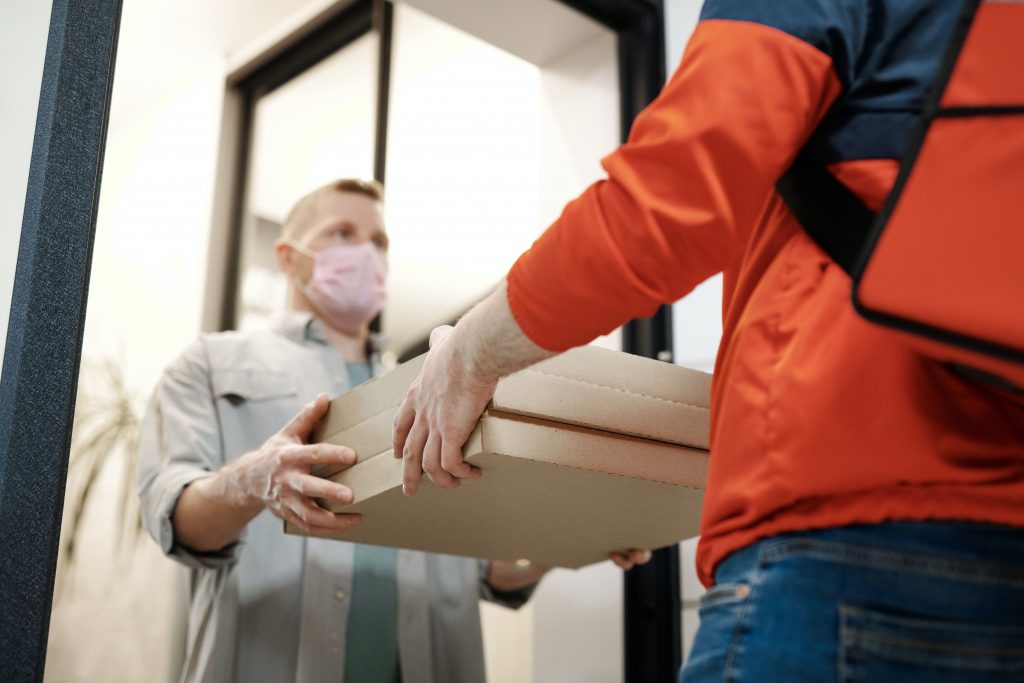BLOG
Tier we go again | What employers need to know about new post-lockdown rules
It’s the announcement many employers had been waiting on for weeks, but the Prime Minister’s post-lockdown plans, unveiled yesterday, have instead brought further uncertainty for struggling businesses.
From 2 December, the nationwide lockdown will be replaced by a tougher iteration of the three-tier system which will see parts of the country bumped up into higher levels than before.
Blog

While the Prime Minister has insisted that “the escape route is in sight”, some have expressed skepticism about a return to regional restrictions. Labour leader Sir Kier Starmer has said this approach is “risky” as “the previous three-tier system didn’t work.”
“Tier 1 areas drifted into Tier 2. Almost all Tier 2 areas ended up in Tier 3. And those in Tier 3 couldn’t see a way out”, he said.
So, what are the new post-lockdown rules?
In a bid to drive down infection rates in the lead up to Christmas, the tier system will be tougher this time around.
In Tier 1, where risk is lowest, the government will continue to encourage people to minimise travel and work from home where possible.
Nick Wilson, Director of Health & Safety Services at Ellis Whittam, says: “For many, working from home has become the norm rather than the exception, but with the government maintaining its advice that “everyone who can work from home should do so”, employers are reminded of their duty to ensure homeworkers are safe and have risk assessed their working environment.”
Businesses and venues in Tier 1 can remain open, in a COVID secure manner, except for those required to stay closed by law, such as nightclubs.
In Tier 2, pubs and bars will only be permitted to reopen if they serve food, and will only be allowed to sell alcohol alongside “substantial meals”, a measure previously reserved for Tier 3 areas.
However, there is some good news for hospitality businesses in these lower tiers, as the 10pm curfew will be extended by an extra hour.
Nick says: “The slightly later curfew makes sense from a health and safety perspective, as in theory it will allow people to filter out of the premises from last orders at 10pm, rather than all at once, reducing the risk of people gathering outside. Whether it will make any difference from a takings perspective remains to be seen.”
Those in Tier 3 will see little relief from existing lockdown measures. Indoor entertainment and tourist venues will remain closed, as will pubs and restaurants with the exception of takeaway and delivery services.
As before, household mixing will be banned indoors and outdoors in hospitality venues and private gardens.
Guidance against travelling in and out of the area will also still apply.
However, close contact services, essential and non-essential retail, places of worship, and leisure and sports facilities may continue to stay open.
The rule of six will also be reintroduced, allowing people to meet outdoors in public places like parks.
A full list of local restrictions is available on the government website.

Whatever tier businesses are placed into, Nick Wilson says individual efforts to ensure safety must continue. “Businesses are required to ensure they are COVID secure irrespective of the tier imposed post-lockdown and now is a prime time to prepare for re-opening”, he said.
“If re-opening with a reduced workforce or altering work patterns, ensure sufficient staff are on site to undertake safety-critical roles. Assess first aid provision to ensure sufficient first aiders are available for all shifts; the same applies for fire marshals. Complete a vulnerable persons risk assessment with individuals classed as clinically or extremely vulnerable before they return to normal duties.”
Further safety considerations
With businesses itching to reopen, it is important that safety remains a top priority.
Nick explains: “Where premises have been unoccupied, re-commission water systems, flush through all taps and clean water systems as necessary. Ensure boiler settings heat water to at least 60oC and take hot and cold water temperature checks to ensure water outlet temperatures are within acceptable ranges. Review cleaning regimes and clean the workplace before reopening and check that there is sufficient hand-cleaning facilities made available, such as soap, hot water and hand sanitiser. Instigate regular management checks to ensure hygiene measures do not lapse.
“Regardless of whether your business opens or remains closed, all statutory inspections must still be completed for gas and electrical installations, plant, machinery, work equipment and fire safety installations. Re-commission heating and ventilation systems in good time prior to re-opening to ensure they are working efficiently.”
Businesses are also required by law to have a COVID-19 Risk Assessment in place. “Like all risk assessments, this should be reviewed and updated as the new tier structure comes into force”, Nick advises.
When do the new tier system rules come into effect?
There has been some confusion over when the new regional restrictions kick in, as some sources have interpreted the Wednesday 2 December implementation date differently.
The government guidance says: “The new rules will come into effect from the beginning (emphasis own) of Wednesday 2 December.” Our understanding, therefore, is that the local restrictions outlined above will apply from 00:01 on Wednesday 2 December.
The impact on businesses
For many, lockdown fatigue is beginning to kick in, and with employers having to wait until Thursday to find out which tier the government has placed them in, there is yet more uncertainty for struggling businesses.
Many have already spoken of the mental anguish caused by the prospect of being left in virtual lockdown until March, though the government has promised that tier allocations will be reviewed every 14 days.
The Prime Minister said he was “very sorry” for the “hardship” that such restrictions would cause business owners.
For businesses in areas like Leicester, who have barely emerged from lockdown since March, further closures may be the final nail in the coffin.
However, aside from the question mark over what areas will fall into what tiers, James Tamm, Employment Law Director at Ellis Whittam, says businesses may actually have less uncertainty than they did coming out of lockdown 1.0.

“Everyone knows what to do this time around and we know these rules will be in place until March, so planning might be easier”, James said. “The furlough path is well trodden now, and I think many employers are more familiar with the law around health and safety refusals to return to work.
“The rules around clinically extremely vulnerable employees are a bit more restrictive once shielding ends and furlough then may only be possible if someone is signed off on long-term sick leave. That’s not to say any of this is simple. Lots of business will remain under huge financial pressure and staff absence will no doubt remain high for the foreseeable but hopefully a lot of employers now have more knowledge and experience in dealing with these issues – and if not, that’s what we’re here for.”
For now, businesses can only await their fate, as discussion turns to restrictions over Christmas. With all four nations on different pages, government leaders will now work together to thrash out a UK-wide approach that will allow families to come together over the festive period.
Adapt to new restrictions with our free resources
From reopening checklists and risk assessments to extended furlough FAQs and letter templates, our Coronavirus Advice Hub contains hundreds of helpful resources designed to help employers apply government guidance, overcome associated workforce challenges, and continue to operate safely. Register free for unlimited access.
Sign up for the latest news & insights
Resources
Latest News & Insights

Work from wherever? | Things to consider before allowing employees to work from abroad
BLOG Written by Alexandra Farmer on 25 May 2022 A few years ago, the idea of working from anywhere in the world seemed like a pipe dream.

Reduced workforce? Here’s 5 health and safety areas you need to revisit
BLOG Written by Charles Spencer on 18 May 2022 In 2022, a growing number of businesses have moved, or are in the process of moving,

Fee for Intervention | Why health and safety breaches could cost your business more in 2022
BLOG Written on 16 May 2022 It’s a well-known fact that poor health and safety practices cost businesses money. And with the HSE recently announcing yet another

Remote work isolation | How employers can help combat loneliness
BLOG Written on 12 February 2021 While the benefits of remote work are seemingly boundless, often overlooked is the isolation and disconnectedness that it can

Time off for getting married or moving house
BLOG Written on 12 May 2022 There are certain big life events that can sometimes get in the way of work. Whether it’s a wedding

Recent cases highlight continued work at height failings
BLOG Written on 6 May 2022 Working at height continues to be the leading cause of work-related fatality. According to most recent HSE figures, these

Managing organisational change | How to keep people happy
BLOG Written on 28 February 2022 In the direst of circumstances, humanity’s true capacity for adaptation and perseverance can be realised. Where the business world

5 ways to combat 2022’s recruitment challenges when you can’t pay more
BLOG Written by Christian Vincent and Hannah Copeland on 15 April 2022 In 2022, recruitment and retention are fast becoming employers’ biggest challenges. With people

A war of words | Managing employees’ political views on the Russia-Ukraine conflict
BLOG Written by Lesley Rennie on 13 April 2022 The war in Ukraine, and the daily news reports of fatalities, continues to spark conversation in



